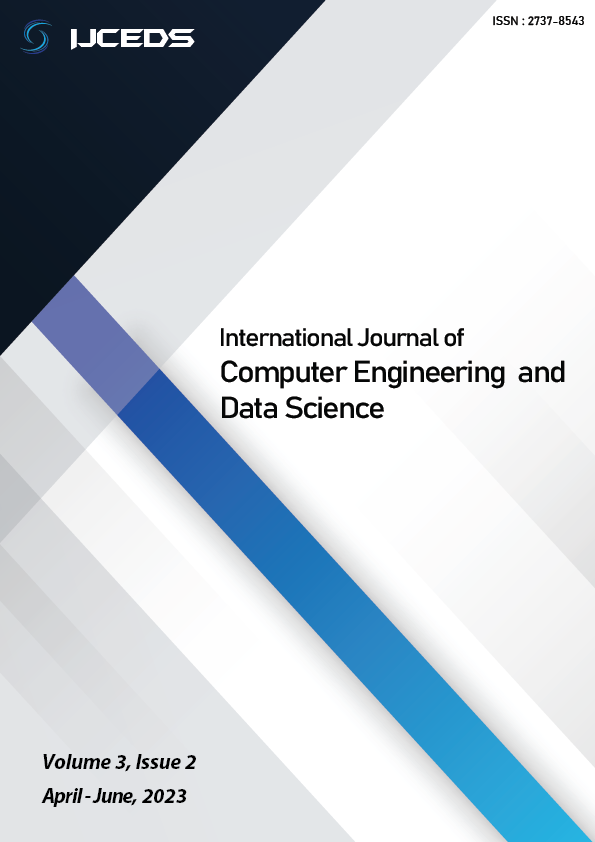Security Considerations in the Internet of Medical Things: COVID-19 IoMT Gadgets
Keywords:
IoMT, Vulnerabilities, Security, Covid-19, CountermeasuresAbstract
The COVID-19 pandemic has underscored the significance of the Internet of Medical Things (IoMT) in healthcare. During this crisis, IoMT devices played a crucial role in remotely monitoring patients, tracking virus transmission, and supporting healthcare professionals. However, the increased adoption of IoMT devices has also raised concerns regarding security and privacy vulnerabilities. This paper presents a comprehensive analysis of the vulnerabilities found in IoMT devices designed and rapidly deployed during the pandemic, such as remote patient monitoring devices and telemedicine platforms. The study identifies common hardware, software, and communication vulnerabilities that pose potential threats to patient safety and the integrity and confidentiality of healthcare data. Furthermore, the paper examines proposed security mechanisms, including blockchain-based frameworks and lightweight authentication schemes, all of which aim to address these challenges. By raising awareness of these vulnerabilities and risks, this research aims to encourage the development of more secure and resilient IoMT devices in the future.
Downloads
References
J. Jeyavel, T. Parameswaran, J. M. Mannan, and U. Hariharan, “Security Vulnerabilities and Intelligent Solutions for IoMT Systems,” in Internet of Medical Things: Remote Healthcare Systems and Applications, D. J. Hemanth, J. Anitha, and G. A. Tsihrintzis, Eds., in Internet of Things. Cham: Springer International Publishing, 2021, pp. 175–194. doi: 10.1007/978-3-030-63937-2_10.
P. K. Sadhu, V. P. Yanambaka, A. Abdelgawad, and K. Yelamarthi, “Prospect of Internet of Medical Things: A Review on Security Requirements and Solutions,” Sensors (Basel), vol. 22, no. 15, p. 5517, Jul. 2022, doi: 10.3390/s22155517.
N. Dilawar, M. Rizwan, F. Ahmad, and S. Akram, “Blockchain: Securing Internet of Medical Things (IoMT),” ijacsa, vol. 10, no. 1, 2019, doi: 10.14569/IJACSA.2019.0100110.
H. Amintoosi, M. Nikooghadam, M. Shojafar, S. Kumari, and M. Alazab, “Slight: A lightweight authentication scheme for smart healthcare services,” Computers and Electrical Engineering, vol. 99, p. 107803, Apr. 2022, doi: 10.1016/j.compeleceng.2022.107803.
C. E. Aitzaouiat, A. Latif, A. Benslimane, and H.-H. Chin, “Machine Learning Based Prediction and Modeling in Healthcare Secured Internet of Things,” Mobile Netw Appl, vol. 27, no. 1, pp. 84–95, Feb. 2022, doi: 10.1007/s11036-020-01711-3.
S. A. Ajagbe, J. B. Awotunde, A. O. Adesina, P. Achimugu, and T. A. Kumar, “Internet of Medical Things (IoMT): Applications, Challenges, and Prospects in a Data-Driven Technology,” in Intelligent Healthcare: Infrastructure, Algorithms and Management, C. Chakraborty and M. R. Khosravi, Eds., Singapore: Springer Nature, 2022, pp. 299–319. doi: 10.1007/978-981-16-8150-9_14.
O. AlShorman, B. AlShorman, M. Al-khassaweneh, and F. Alkahtani, “A review of internet of medical things (IoMT) - based remote health monitoring through wearable sensors: a case study for diabetic patients,” IJEECS, vol. 20, no. 1, p. 414, Oct. 2020, doi: 10.11591/ijeecs.v20.i1.pp414-422.
Q. Chen, Y. Zhao, and Y. Liu, “Current development in wearable glucose meters,” Chinese Chemical Letters, vol. 32, no. 12, pp. 3705–3717, Dec. 2021, doi: 10.1016/j.cclet.2021.05.043.
R. Hireche, H. Mansouri, and A.-S. K. Pathan, “Security and Privacy Management in Internet of Medical Things (IoMT): A Synthesis,” Journal of Cybersecurity and Privacy, vol. 2, no. 3, Art. no. 3, Sep. 2022, doi: 10.3390/jcp2030033.
O. AlShorman, B. Alshorman, M. Masadeh, F. Alkahtani, and B. Al-Absi, “A review of remote health monitoring based on internet of things,” IJEECS, vol. 22, no. 1, p. 297, Apr. 2021, doi: 10.11591/ijeecs.v22.i1.pp297-306.
P. M. Chanal and M. S. Kakkasageri, “Security and Privacy in IoT: A Survey,” Wireless Pers Commun, vol. 115, no. 2, pp. 1667–1693, Nov. 2020, doi: 10.1007/s11277-020-07649-9.
S. Bowman, “Impact of Electronic Health Record Systems on Information Integrity: Quality and Safety Implications,” Perspect Health Inf Manag, vol. 10, no. Fall, p. 1c, Oct. 2013.
Djenna and D. Eddine Saidouni, “Cyber Attacks Classification in IoT-Based-Healthcare Infrastructure,” in 2018 2nd Cyber Security in Networking Conference (CSNet), Paris: IEEE, Oct. 2018, pp. 1–4. doi: 10.1109/CSNET.2018.8602974.
S. Weyer, M. Schmitt, M. Ohmer, and D. Gorecky, “Towards Industry 4.0 - Standardization as the crucial challenge for highly modular, multi-vendor production systems,” IFAC-PapersOnLine, vol. 48, no. 3, pp. 579–584, Jan. 2015, doi: 10.1016/j.ifacol.2015.06.143.
T. S. Messerges, E. A. Dabbish, and R. H. Sloan, “Examining smart-card security under the threat of power analysis attacks,” IEEE Transactions on Computers, vol. 51, no. 5, pp. 541–552, May 2002, doi: 10.1109/TC.2002.1004593.
H. Mohd Aman, W. H. Hassan, S. Sameen, Z. S. Attarbashi, M. Alizadeh, and L. A. Latiff, “IoMT amid COVID-19 pandemic: Application, architecture, technology, and security,” Journal of Network and Computer Applications, vol. 174, p. 102886, Jan. 2021, doi: 10.1016/j.jnca.2020.102886.
B. Šehović and K. Govender, “Addressing COVID-19 vulnerabilities: How do we achieve global health security in an inequitable world,” Global Public Health, vol. 16, no. 8–9, pp. 1198–1208, Sep. 2021, doi: 10.1080/17441692.2021.1916056.
Downloads
Published
How to Cite
Issue
Section
ARK
License
Copyright (c) 2023 Charaf Eddine AIT ZAOUIAT, Mohamed BASLAM, Mohamed EDDABBAH, Mohamed ABDELBAKI, Mohamed EL GHAZOUANI, Layla AZIZ

This work is licensed under a Creative Commons Attribution-NonCommercial 4.0 International License.
Copyright on any article published in the International Journal of Computer Engineering and Data Science (IJCEDS) is retained by the author(s). All articles are published under the terms of the Creative Commons Attribution-NonCommercial 4.0 International License (CC BY-NC 4.0), which permits any non-commercial use, distribution, and reproduction in any medium, provided that the original work is properly cited.
License Agreement
By submitting and publishing their work in IJCEDS, the authors:
-
Grant IJCEDS the non-exclusive right to publish the article and to identify IJCEDS as the original publisher.
-
Authorize any third party to use, share, and reproduce the article for non-commercial purposes, provided that appropriate credit is given to the original authors and source, and a link to the license is included.














